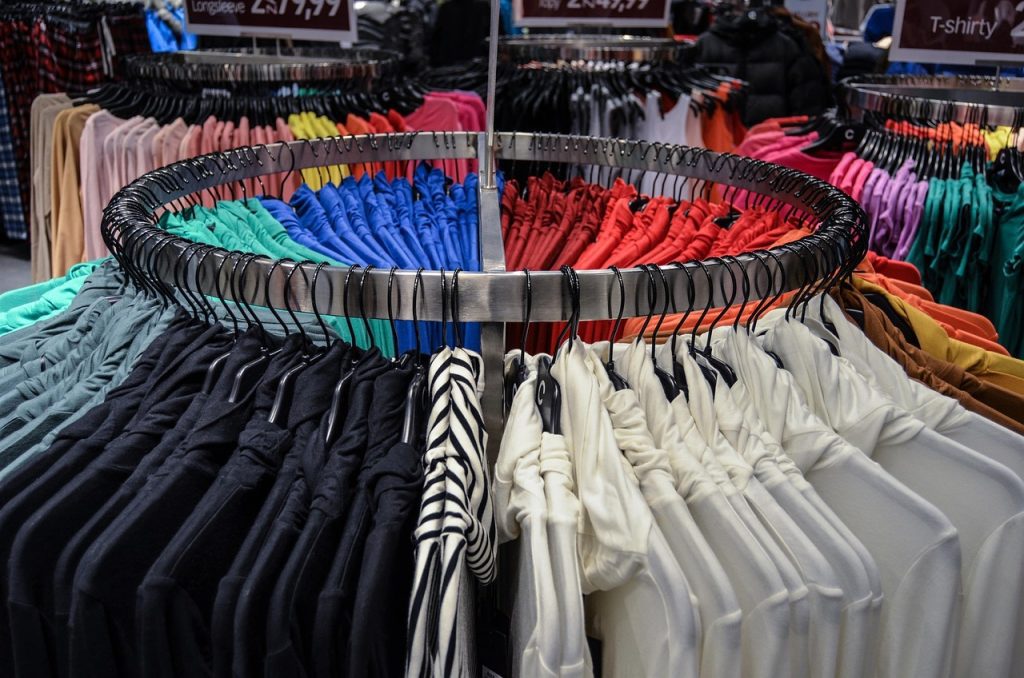You see a trendy top for $5. It’s cheap, it’s cute, and you think, “Why not?” But did you know that that $5 shirt costs way more than you think?
Fast fashion – cheap, mass-produced clothing designed to be worn a few times and thrown away – is one of the biggest polluters on Earth. It’s fueling climate change, exploiting workers, and tricking you into buying more than you need.
But you can break free from fast fashion. And when you do, you’ll help the planet, support fair wages, and even save money in the long run.
This article will show you just that!
The Environmental Disaster of Fast Fashion
1. Mountains of Waste:
- Every second, a garbage truck full of clothes is dumped or burned.
- 85% of all textiles end up in landfills each year, that’s 92 million tons of waste.
- Fast fashion brands produce 52 micro-collections per year (instead of the traditional 2-4 seasons), pushing overconsumption.
2. Water Pollution and Toxic Chemicals:
- 20% of global wastewater comes from textile dyeing, poisoning rivers in countries like Bangladesh and China.
- Synthetic fabrics (like polyester) shed microplastics, contaminating oceans and entering our food chain.
3. Carbon Emissions:
- The fashion industry produces 10% of global carbon emissions, more than all international flights and shipping combined.
- One cotton T-shirt requires 2,700 liters of water (enough for one person to drink for 2.5 years).
Thing is, fast fashion is an environmental nightmare. But the damage doesn’t stop there.
The Human Cost of Fast Fashion
1. Sweatshops and Poverty Wages:
- 80% of garment workers are women earning less than $3 a day.
- Child labor is still rampant in countries like Bangladesh, India, and Vietnam.
2. The Rana Plaza Disaster:
- In 2013, 1,134 garment workers died when the Rana Plaza factory collapsed in Bangladesh.
- Many brands linked to the tragedy still don’t pay fair wages or ensure safe conditions.
3. Greenwashing:
- Companies like H&M and Zara claim to be “sustainable” while producing billions of clothes yearly.
- Less than 1% of recycled clothing is actually turned into new garments.
The truth is that your cheap clothes come at a human cost.
Why Fast Fashion Isn’t Actually Cheap (The Financial Trap)
1. The False Economy of Cheap Clothes:
- A $10 shirt that falls apart after 3 wears = $3.33 per wear.
- A $50 shirt that lasts 5 years = $0.02 per wear.
2. The Psychology of Overconsumption:
- Fast fashion brands release 52+ collections per year to keep you buying.
- Impulse buying leads to closets full of unworn clothes (the average person wears only 20% of their wardrobe).
The real cost is that you’re spending more money on clothes that don’t last.
How to Quit Fast Fashion (Without Losing Your Style)
1. Buy Less, Choose Well:
- Use the 30-Wear Rule – before buying, ask: “Will I wear this at least 30 times?”
- Invest in timeless staples (white tees, jeans, blazers) instead of trends.
2. Secondhand and Thrifting:
- Thrift stores, Depop, Poshmark, and ThredUp offer stylish, affordable options.
- Vintage fashion is unique and reduces waste.
3. Support Ethical & Sustainable Brands:
- Look for Fair Trade, B Corp, or GOTS-certified brands.
- Some great options include Patagonia, Reformation, Eileen Fisher, Pact.
4. Care and Repair Your Clothes:
- Wash clothes in cold water to prevent shrinkage.
- Learn basic mending (sewing buttons, patching holes).
5. Rent, Swap, or Borrow;
- Rent the Runway for special occasions.
- Clothing swaps with friends = free new outfits.
Bottom Line
Fast fashion is bad for the planet, bad for workers, and bad for your wallet. But you have the power to change it.
Next time you shop, ask yourself:
- Who made this?
- What’s it made of?
- Do I really need it?
Small changes lead to big impacts.
Your wardrobe shouldn’t cost the Earth. Let’s make fashion fair, sustainable, and guilt-free.
